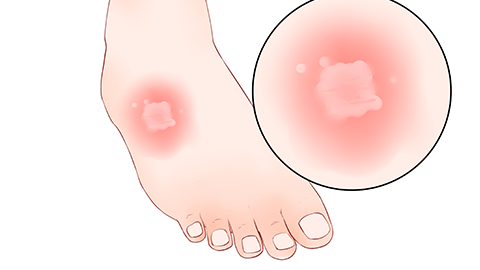How to treat blisters after a burn
Generally, blisters caused by burns can be treated through cold water rinsing, disinfection, blister management, topical medications, and oral medications. The specific approaches are as follows:

1. Cold water rinse: Immediately rinse the burn wound with running cold water for at least 15 minutes. This step helps rapidly reduce the temperature of the burned area, alleviates pain, and prevents further heat-induced damage to the skin tissue.
2. Disinfection: After rinsing, disinfect the wound and surrounding skin with antiseptics such as povidone-iodine or alcohol to reduce bacterial growth and prevent infection. Note that the disinfectant should not directly touch the blister to avoid rupture.
3. Blister management: Small blisters usually require no special treatment and can be naturally absorbed. If the blister is large, under the guidance of a healthcare professional, use a sterile needle to gently puncture the base of the blister and drain the fluid, while maintaining the integrity of the blister roof to reduce the risk of infection.
4. Topical medications: After a burn, antimicrobial medications such as erythromycin ointment, mupirocin ointment, or moist burn ointment may be applied under a doctor's guidance to relieve pain and promote wound healing. Before applying the ointment, ensure the wound is clean and dry to avoid infection.
5. Oral medications: If the burn causes severe pain, pain relievers such as ibuprofen sustained-release capsules, diclofenac sodium sustained-release tablets, or celecoxib capsules may be taken as directed by a physician. Additionally, to prevent infection, oral antibiotics such as amoxicillin capsules, cefixime dispersible tablets, or azithromycin tablets may be used to achieve anti-inflammatory and antibacterial effects.
During the treatment of burn-related blisters, tight clothing that presses on the blisters should be avoided. It is also important to enhance nutritional intake, particularly foods rich in protein, to facilitate wound healing.





